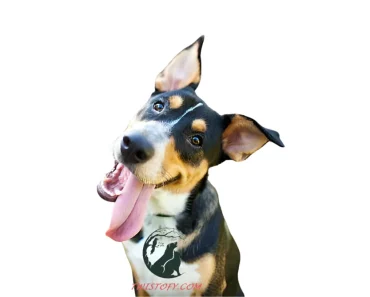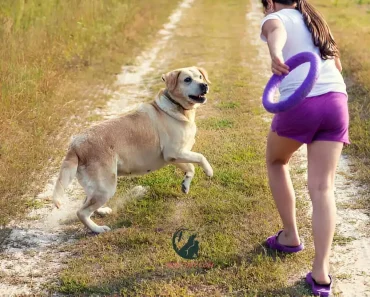
Dog Training Collars
Dog training collars are valuable tools for teaching obedience and managing behavior in dogs.. In this comprehensive guide, we’ll explore everything you need to know about dog training collars, including their types, how to use them effectively, and important safety considerations.
Understanding Dog Training Collars
-
Definition and Purpose:
-
- Dog training collars are devices designed to assist in training by providing feedback or correction to dogs during training sessions.
- They can be used to reinforce commands, deter unwanted behaviors, or address specific issues such as excessive barking or pulling on the leash.
-
Types of Dog Training Collars:
-
- Flat Collars: Basic collars made of nylon or leather, primarily used for holding identification tags.
- Martingale Collars: Designed to prevent dogs from slipping out of the collar, ideal for dogs with narrow heads like Greyhounds.
- Prong Collars: Also known as pinch collars, they apply pressure around the dog’s neck when pulled, commonly used for training strong, stubborn dogs.
- Shock Collars: Emit electric stimulation or vibration to provide feedback to the dog, controversial but effective when used correctly.
Choosing the Right Dog Training Collar
-
Consider Your Dog’s Needs:
-
- Assess your dog’s size, breed, temperament, and specific training requirements before selecting a collar.
- Consult with a professional dog trainer or veterinarian for personalized recommendations.
-
Research Collar Features:
-
- Evaluate the features of each type of collar, including adjustability, durability, and ease of use.
- Look for collars with multiple settings or levels of stimulation to tailor the training to your dog’s sensitivity.
-
Safety Considerations:
-
- Choose collars made of high-quality materials to ensure they won’t break or cause injury to your dog.
- Avoid leaving training collars on your dog unsupervised to prevent accidents or choking hazards.
Effective Use of Dog Training Collars
-
Proper Fit and Adjustment:
-
- It’s crucial to ensure the collar fits comfortably around your dog’s neck, providing a snug yet not overly tight fit. Aim for a space where you can slip two fingers between the collar and your dog’s neck. Regularly check and tweak the collar’s fit as your dog grows or experiences changes in weight.
-
Consistent Training Techniques:
-
- Use the collar as part of a comprehensive training program that includes positive reinforcement, consistency, and patience.
- Avoid relying solely on the collar for training and incorporate other methods such as verbal cues and rewards.
Training Specific Behaviors with Dog Training Collars
-
Leash Pulling:
-
- Use a no-pull harness or martingale collar to discourage pulling on the leash.
- Apply gentle pressure or a correctional signal when your dog pulls, rewarding them when they walk calmly by your side.
-
Barking:
-
- Utilize a bark collar with adjustable sensitivity levels to discourage excessive barking.
- Pair the use of the bark collar with positive reinforcement training to teach your dog alternative behaviors.
-
Off-Leash Training:
-
- Use a remote training collar to reinforce recall commands and maintain control over your dog when off-leash.
- Practice off-leash training in a controlled environment with minimal distractions before progressing to more challenging situations.
Common Misconceptions and Safety Tips
-
Misconceptions about Shock Collars:
-
- Contrary to popular belief, modern shock collars are designed to deliver safe, adjustable levels of stimulation and are not intended to cause harm to your dog.
- However, they should be used responsibly and under the guidance of a professional trainer to ensure your dog’s safety and well-being.
-
Safety Precautions:
-
- Always read and follow the manufacturer’s instructions for proper collar use and maintenance.
- Monitor your dog’s behavior and physical condition when using a training collar and discontinue use if you notice any signs of distress or discomfort.
Types of Dog Training Collars
-
Vibration Collars:
-
- These collars emit a gentle vibration as a form of correction or communication with your dog. They are often used for training purposes, particularly in situations where audible cues may not be suitable.
-
Citronella Spray Collars:
-
- Citronella spray collars release a burst of citronella scent when activated by barking or other behaviors. The scent is unpleasant for dogs, serving as a deterrent without causing harm. These collars are commonly used for addressing excessive barking.
-
Ultrasonic Collars:
-
- Ultrasonic collars emit a high-pitched sound that is audible to dogs but not to humans. This sound can startle dogs and interrupt unwanted behaviors such as barking or jumping. Ultrasonic collars are non-invasive and can be effective for certain training needs.
Advanced Training Techniques with Dog Training Collars
-
Boundary Training:
-
- Use an electronic fence collar to establish boundaries for your dog. These collars work with an invisible fence system, emitting a warning tone or static correction when your dog approaches the boundary line.
-
Remote Training:
-
- Remote training collars, also known as e-collars or shock collars, allow you to deliver a corrective stimulus to your dog from a distance. They are useful for off-leash training, behavior modification, and reinforcing commands.
-
Behavior Modification:
-
- Dog training collars can be effective tools for addressing a wide range of behavioral issues, including aggression, separation anxiety, and leash reactivity. By providing timely and appropriate corrections, these collars can help modify undesirable behaviors and promote obedience.
Incorporating Positive Reinforcement with Dog Training Collars
-
Reward-Based Training:
-
- Pair the use of training collars with positive reinforcement techniques, such as treats, praise, and play. Reward your dog for desired behaviors to encourage repetition and learning.
-
Consistency and Timing:
-
- Consistency is key when using training collars. Ensure that your corrections are delivered promptly and consistently, so your dog can make the connection between their behavior and the consequence.
-
Gradual Progression:
-
- Introduce training collars gradually and start with low levels of stimulation or correction. Increase the intensity only if necessary and always monitor your dog’s response to ensure their comfort and safety.
Safety Considerations for Using Dog Training Collars

Dog Training Collars
-
Consultation with Professionals:
-
- Before using a training collar, consult with a certified dog trainer or behaviorist to ensure proper selection and usage.
- They can provide guidance on choosing the right type of collar for your dog’s specific needs and teach you how to use it effectively and responsibly.
-
Regular Monitoring:
-
- Monitor your dog’s response to the training collar closely and be observant of any signs of discomfort or distress.
- If you notice any adverse reactions or unexpected behaviors, discontinue use immediately and seek professional advice.
-
Balanced Approach:
-
- While training collars can be effective tools, they should be used as part of a comprehensive training program that emphasizes positive reinforcement and humane training methods.
- Avoid relying solely on training collars and be mindful of your dog’s overall well-being and emotional state.
Dog training collars can be valuable tools for teaching obedience and addressing behavior issues in dogs when used responsibly and appropriately. By understanding the different types of collars available, choosing the right one for your dog’s needs, and implementing effective training techniques, you can help your furry friend become a well-behaved and happy member of the family.
Remember, training collars should complement a comprehensive training program that prioritizes positive reinforcement, consistency, and patience. With dedication and commitment, you can achieve training success and strengthen the bond between you and your canine companion.






